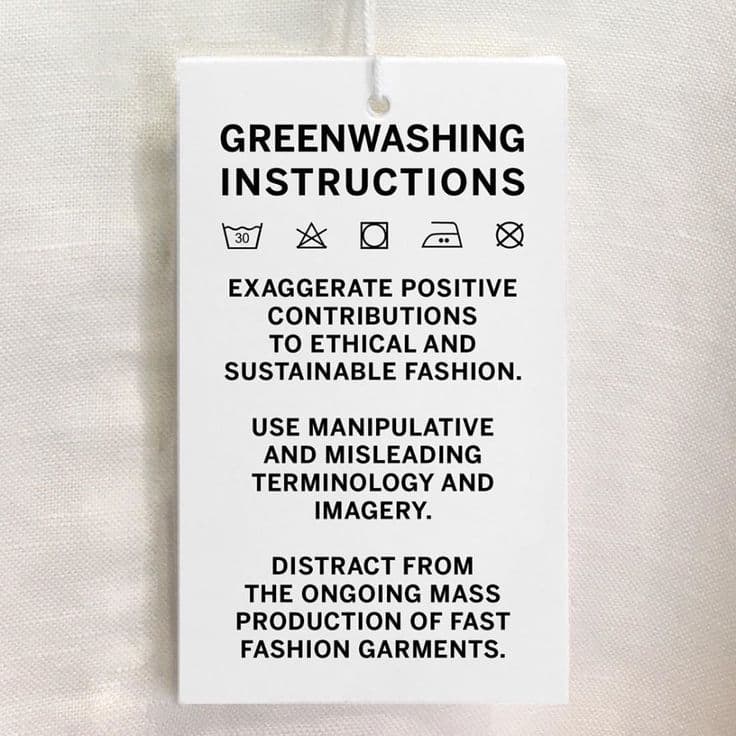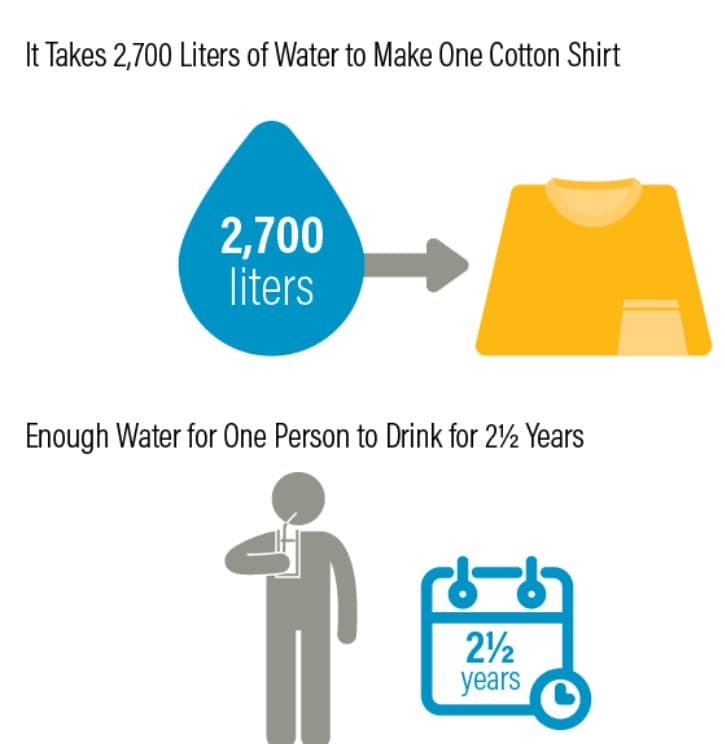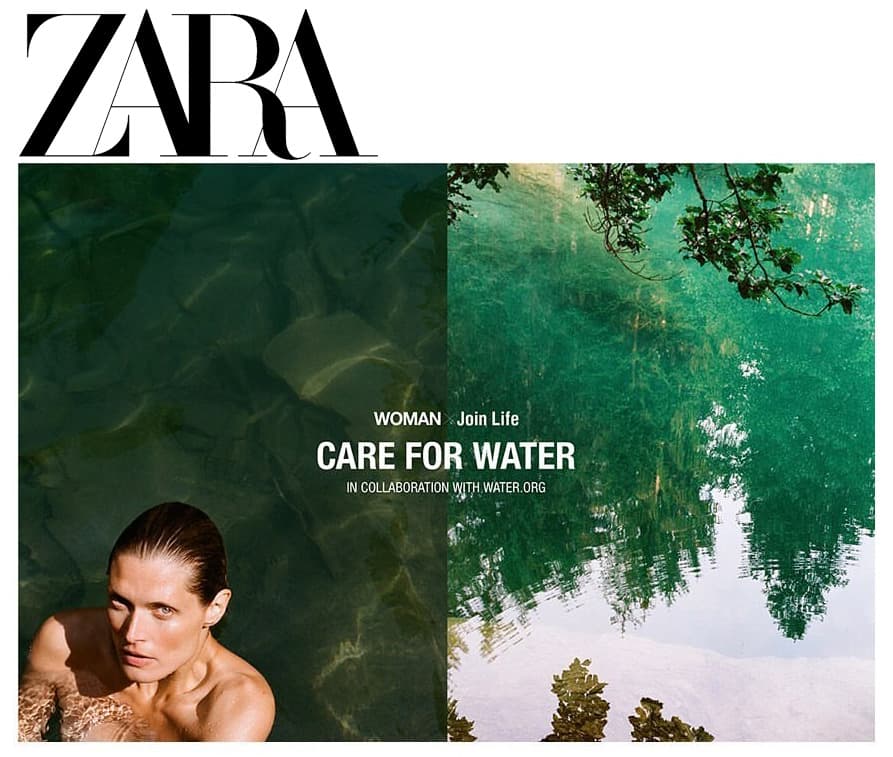
Fast fashion companies’ fraudulent attempts towards sustainability
Are fast fashion retailers attempting to take a more environmentally friendly journey? Lets take a look at Zara, H&M and Primark’s examples according to Marta Camilla Foglia and Milena Gabanelli’s thoughts and their relationship with sustainability.
Marta Camilla Foglia and Milena Gabanelli’s thoughts on the relationship between fast fashion and sustainability
The fashion industry is dominated by fast fashion, which is defined as the mass production of inexpensive, low-quality clothing items that are meant to be worn for a brief time before being discontinued and replaced by new styles. However, this production system is having an impact on the environment and society that the entire community must bear. Businesses are aware of this and attempt to boost their reputation by making empty promises about sustainability.
Greenwashing is the term used to describe the deception of the consumer through widespread communication campaigns that imply the entire production model is “green.” However, how can a buyer tell the difference between a genuine and fraudulently ecological label?
Greenpeace’s ‘Greenwash danger zone’ is the most complete report; it looked at the purported sustainability labels of 29 brands, including Zara, H&M, and Primark—brands that are part of the ‘Detox commitment’ initiative. Labels that might conceal a reality that is vastly different from what is being shown to us.

BCI cotton sustainability

One of the most popular fibers in the fashion industry is cotton. This fiber has a lot of negative environmental effects due to its massive water consumption (a single t-shirt requires 2,700 liters), use of pesticides and fertilizers and use of genetically modified seeds. The Better Cotton Initiative (BCI) was launched in 2005 with the intention of encouraging more environmentally friendly production by means of less chemical-intensive farming methods.
Just 20% of cotton grown worldwide is BCI certified in 2021, according to the Organic Cotton Accelerator report, which is very minimal. Furthermore, the standard does not impose a mandatory threshold of pesticide use restrictions, so that minimal is not necessarily sustainable since the entire supply chain—that is, the cotton’s journey from cultivation to final production—is opaque.
According to a 2021 Textile Exchange report, BCI-labeled cotton actually uses up to 67% more pesticides than conventional cotton. Seventy percent of the cotton clothing that H&M produces—roughly three billion pieces annually—is certified by the BCI standard.
The fake misconception regarding recycled polyester
In the context of textiles, “recycled polyester” refers to the process of recycling plastic bottles (PET) to extract polyester fibers for use in apparel and other textile products. However, unlike bottles, polyester cannot be recycled once it has been made into fabric because it is no longer reusable. With two exacerbating elements:
1)A total of 1.5 tonnes of CO2 are produced during the production process;
2) Every wash releases 1,900 microfibres, further contaminating aquatic environments. An average of 800 million garments are produced annually by Zara, primarily in polyester.
Viscose & Co
Artificially produced cellulosic fibers, like viscose, are frequently promoted as a sustainable option. It takes 70–140 liters of water to produce one kilogram of fiber. Furthermore, it is necessary to use potentially toxic substances like carbon disulfide (CanopyStyle Report). Trees provide the cellulose’s raw material, which is used to make fabric.
Just 14% of the cellulose used to make viscose, according to the Forest Stewardship Council (FSC), comes from certified sources, or forests that have been evaluated and managed in accordance with globally recognized standards for forest sustainability, like the FSC or the Programme for the Endorsement of Forest Certification (PEFC).
A certified forest indicates that its management adheres to best practices for biodiversity conservation, local community rights protection, and sustainable forest resource management.
The Zara line

Despite its efforts to adhere to environmentally conscious policies, Zara, through its’sustainable’ label Join Life Care for Water/Care for Planet, nevertheless uses non-sustainable BCI cotton.
The Spanish brand and LanzaTech, a start-up that turns carbon emissions into clothing, collaborated to introduce a limited-edition collection in June 2022. With the use of this new technology, CO2 is captured during the disposal of household, commercial, or agricultural waste. Subsequently, the CO2 undergoes a fermentation process that yields ethanol (mono ethylene glycol, or MEG), which is an essential ingredient in the creation of polyester yarn. Nevertheless, not all of the captured carbon is present in the final fabrics. Just 20% of the finished polyester is made of the MEG LanzaTech supplies; the remaining 80% is made of purified terephthalic acid (PTA).
The Primark collection

With an annual revenue of nearly $6 billion, Primark, an Irish company, has created an internal sustainability program called the PSCP (Primark Sustainable Cotton Program), through which it attests to the quality of the materials used. However, the data is nowhere to be found, and the benefits to the environment have not yet been made public.
Furthermore, the fast fashion company’s sustainable performance has not been independently verified by an outside party, which is a prerequisite for materials like recycled polyester and organic cotton. Additionally, Primark debuted a limited-edition line in 2022 called “EarthColors®❏ by Archroma,” which included 22 items of clothing dyed naturally using leftover food and vegetable scraps. It’s a noble move but this only applies to 22 items of clothing. The remainder of the massive catalog is still dependent on harmful chemical dyes.
H&M accused of greenwashing

The second-biggest apparel retailer in the world by sales volume, H&M, was forced into court in 2022 as a result of a greenwashing lawsuit filed by Chelsea Commodore, an American marketing student. The ‘Conscious Choice’ collection was at issue in this dispute. Commodore asserted that H&M’s sustainability claims were false after Quartz, a well-known US online news and media outlet, conducted an investigation.
In order to tell customers about the environmental sustainability of each product, H&M used a scoring system based on the Sustainable Apparel Coalition’s (SAC) Higg Material Sustainability Index (MSI). However, more than half of the scores represented the products as being greener than they actually were, according to Quartz. H&M took down the scores from its items in response to the complaint, and the SAC group stopped using them.
Conclusion: Although the fast fashion market promises to appeal to sustainability, the efforts made are still not enough to reverse the current damage made.
Read more:
NEWSLETTER
Vuoi ricevere Mam-e direttamente nella tua casella di posta? Iscriviti alla Newsletter, ti manderemo un’email a settimana con il meglio del nostro Magazine.


